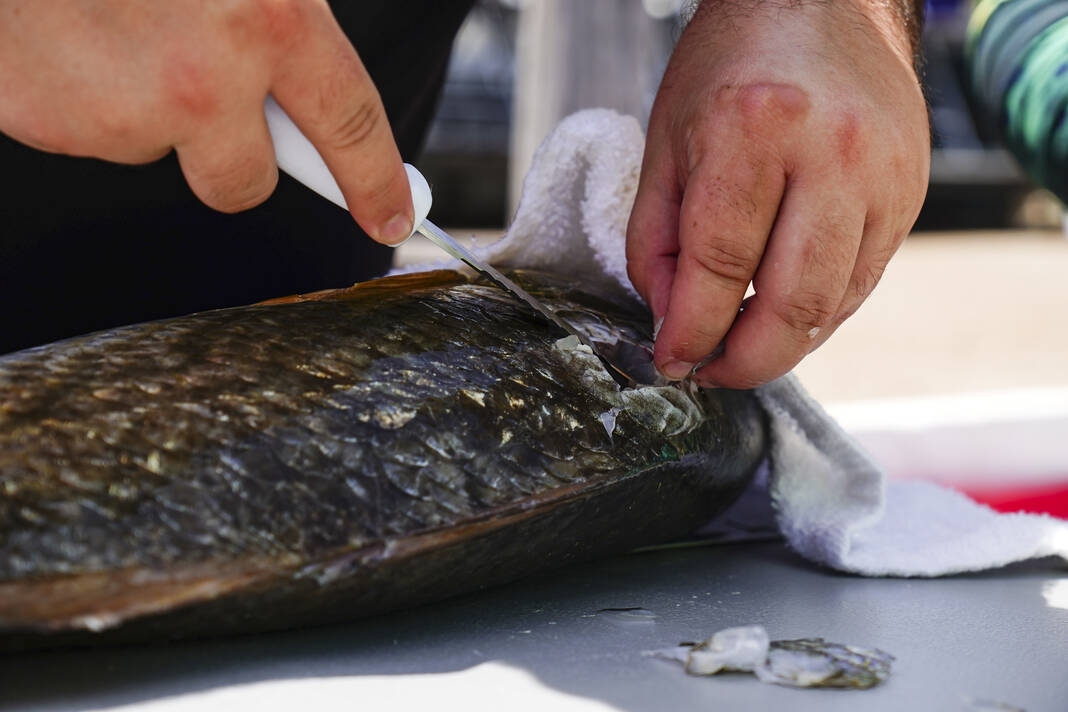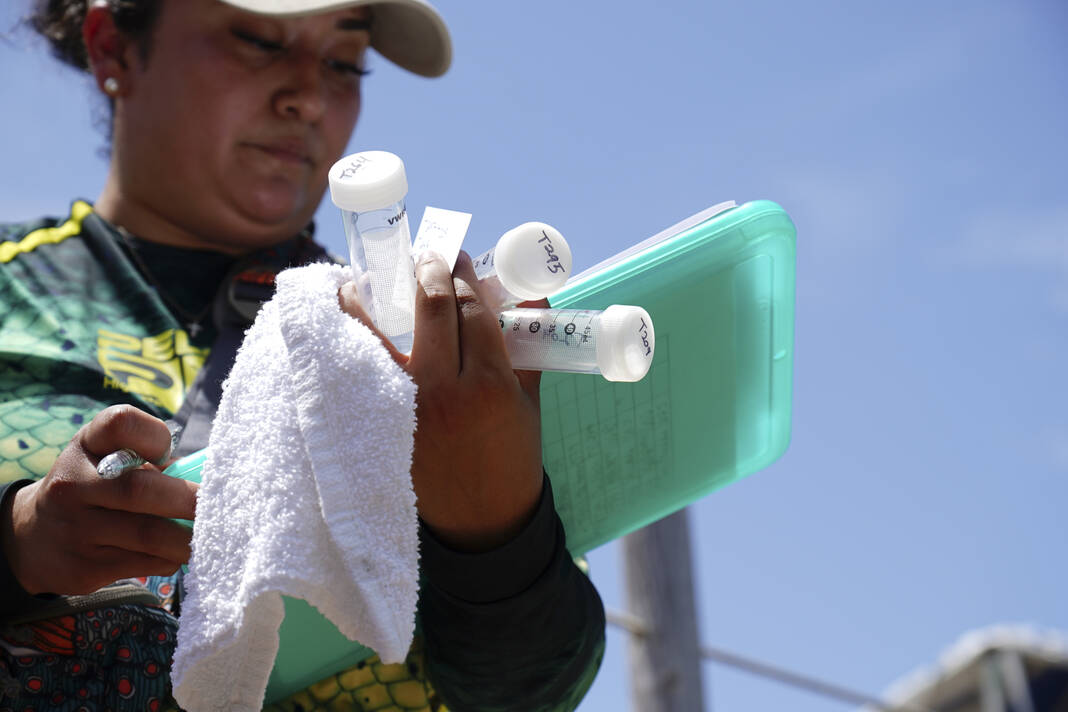Spectators and competitors at the 82nd Texas International Fishing Tournament might have seen an unusual sight on Aug. 6 as they watched the catches come into the docks of the Southpoint Marina in Port Isabel.
At a side station, Texas State University-San Marcos graduate students Joe Kuntz and Jasmine Rodriguez were hard at work— sampling, cataloging and giving out number cards to anglers from TIFT catches.
The students were there as part of a long-term research study by Associate Professor Jessica Dutton from the Department of Biology at Texas State University-San Marcos around mercury and our marine life.
Mercury has three forms: Inorganic, which you can find in seawater; elemental mercury, which used to be in thermometers; and organic mercury, to which methylated mercury, a type that builds up in muscle tissue, belongs.

According to Dutton, one of the ways the methylation of mercury often happens is through sulfate-reducing bacteria in sediment in some overlying water columns. It can also make its way into bodies of water through river runoff and atmospheric deposition.
If not for what methylated mercury does, this would be just one more unique, if worrying, science factoid about our planet. However, once it enters the human body, this element has a series of health risks and is taken in through one of the tastier parts of living life along the Texas Gulf Coast—seafood.
“Mercury, particularly methylmercury, as humans our main exposure to it is through seafood consumption. With methylmercury, we know that once it gets into your body, it can cross the blood-brain barrier and go into your nervous system. It is a neurotoxin,” Dutton said.
In humans, mercury is linked, according to Dutton, to reduced muscle coordination, short-term memory issues, and speech problems as just the start of the havoc it causes in the human body.
Fish don’t have it much better. In fish, elevated mercury levels lead to reduced fertility, and of the eggs that fish produce, there is a lower likelihood those eggs can hatch successfully. It also reduces liver function and damages the gills and their sense of smell. And just like for us, it is also a neurotoxin. Joining the university faculty in 2015, Dutton— who describes herself as a marine ecotoxicologist— has focused on how trace elements— like mercury— accumulate in marine life—from mollusks to toothed whales. Particularly in the Gulf of Mexico, which has a higher mercury content than the Atlantic Ocean. However, research about mercury levels in popular commercial and recreational fishing targets along the Texas Gulf Coast was limited.
“People eat a lot of seafood, and I started looking into the literature and past research that has been done in all of these different species and found that the research is limited,” she said.
Each year, Dutton starts by taking samples of fish muscle tissue in the summer at different fishing tournaments and cleaning stations along the Texas Gulf Coast. Then tests are run to determine how much mercury builds up in the muscle tissue of varying species.
With this information, Dutton and a team of graduate students hope to build a body of research— called the Texas Seafood Mercury Study— for people to make safe choices about the seafood they eat.
For seafood lovers, it can be impossible to avoid mercury entirely as it builds up in all fish over time. However, what they can do is pick fish with lower mercury levels to consume.
“No amount of mercury is good, but if you eat seafood frequently, then you want to target species below 0.3 parts per million,” she said.

The study has found that bay fish, like red drum and flounder, tend to have a much lower concentration than offshore fish like blue marlin and king mackerel. In the study, on average blue marlin contain mercury at a whopping 10 parts per million, and king mackerel is only a bit lower at 4 parts per million.
The reason for this is that— as fish grow larger and older, mercury accumulates and stays put because they take in mercury too fast for their body to get rid of it. Additionally, species at the top of their food chains end up feeding on other species that already have accumulated mercury.
Thanks to funding from the Texas Sea Grant and collaborators Sara Shields and Dale Blasingame from the Department of Communication Studies, the Texas Seafood Mercury Study will be launching on Twitter and Instagram to share the data in October, with a website launch planned for 2023. Eventually, Dutton plans to have cards available that rank fish by mercury content for consumers.
“People should know what they are eating and the potential exposure so they can make educated and informed decisions about what seafood they decide to eat,” she said.





